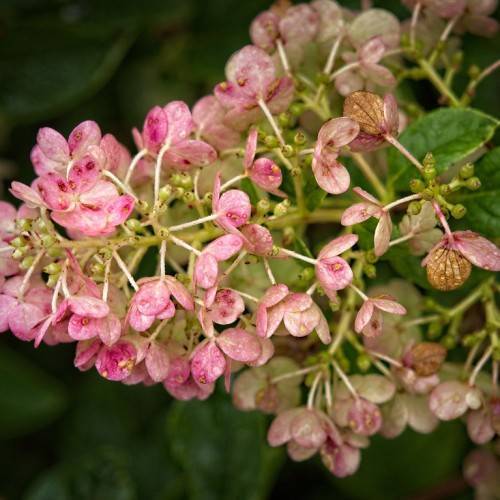
panicle hydrangea
Hydrangea paniculata 'Tardiva'
Also Known As - P.G. HydrangeaCycle:
Perennial
Watering:
Average
Hardiness Zone:
4
Flowers:
Flowers In Summer
Sun:
Filtered shade, Full sun
Soil:
Well-drained
Fruits:
Fruits In Autumn Ready In Fall
Leaf:
Yes
Growth Rate:
High
Maintenance:
Moderate
Drought Tolerant:
Yes
Care Level:
Medium
watering
For panicle hydrangea, water when needed and water deeply. Generally, the plant should receive 1 to 1.5 inches of water each week. This can be achieved through either natural rainfall or supplemental watering. During periods of drought, increase watering to ensure the soil remains moist. Allow the soil to dry slightly between waterings to prevent root rot. When supplemental water is needed, water the soil directly, making sure to avoid getting water on the foliage.
sunlight
Panicle hydrangeas, which belong to the botanical family Hydrangeaceae, thrive in full sun or partial shade. They require at least 5 to 6 hours of direct sunlight a day, particularly in the late morning and early afternoon. For best results, plant panicle hydrangeas in a spot where they will receive at least 1 hour of direct morning sunlight and several hours of bright, indirect light during the rest of the day. Despite their sun needs, it's important to not overdo it, as panicles need some protection from the intense heat of the late afternoon sun.
pruning
Panicle hydrangeas should be pruned once a year in early spring just before new growth begins. In late winter or very early spring, remove any dead, damaged, or crossing branches and cut back 1 to 2 year old wood by 1 third to 1 half of their length. Panicle hydrangeas can also be shaped by selective pruning, cutting out individual stems at the desired height.
